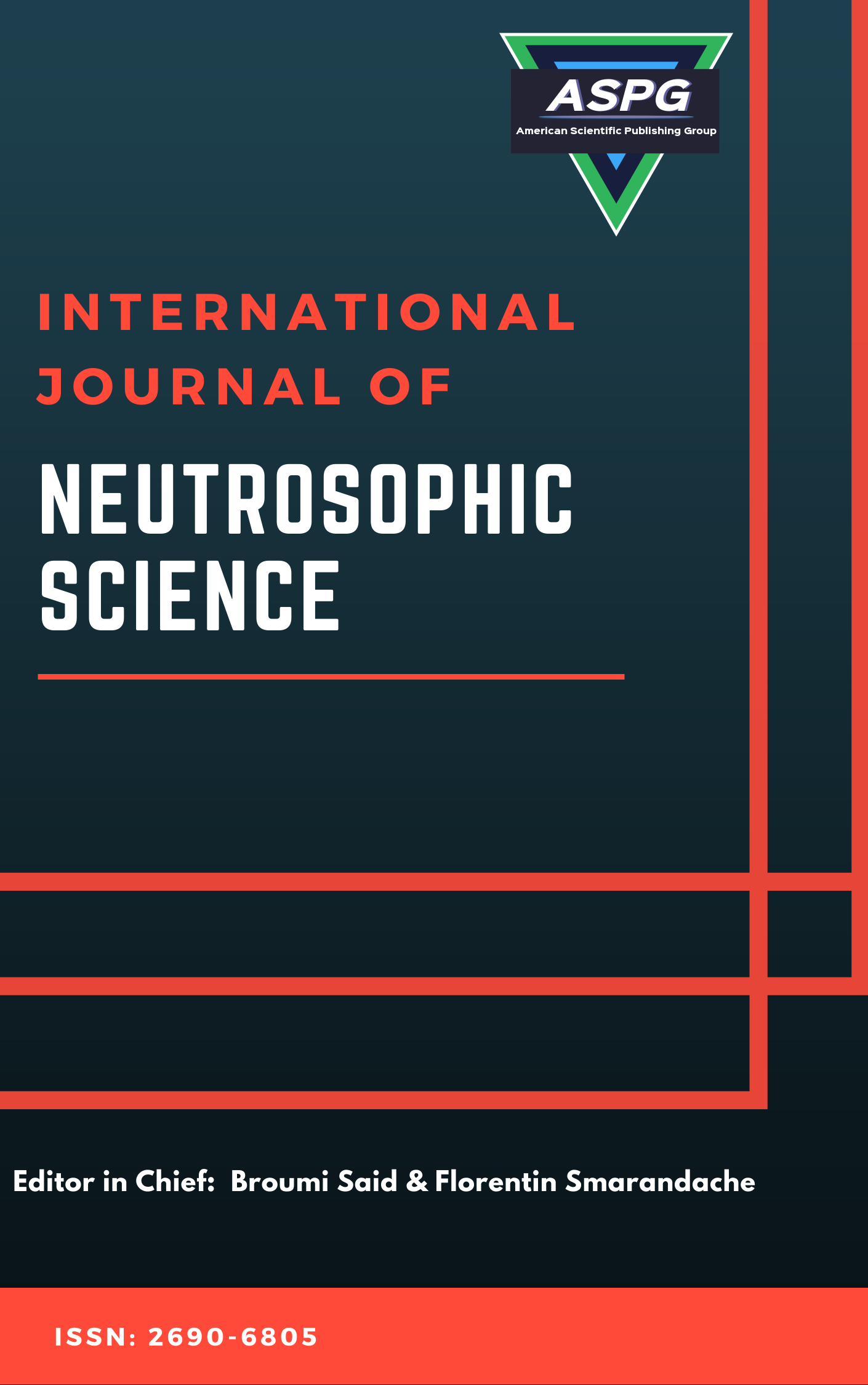

Volume 25 , Issue 4 , PP: 322-345, 2025 | Cite this article as | XML | Html | PDF | Full Length Article
Mohammed A. Hilal 1 * , Faris M. Alwan 2 , Alaa Adnan Auad 3
Doi: https://doi.org/10.54216/IJNS.250428
This paper deals with some inverse problems for nonlinear time-dependent PDEs in one spatial dimension, we investigate an inverse Cauchy problem that is settled by the nonlinear viscous Burgers equation. The viscous Burgers equation is a partial differential equation that is encountered in fluid dynamics studies, particularly in the domain of upward flow. The simplified model of the viscous Burgers equation explains the behavior of incompressible viscous fluid. The inverse Burgers problem belongs to a class of problems called ill-posed problems, which implies that there may be multiple sets of initial and/or boundary conditions that result in the same solution of the Burgers equation. To obtain robust and reliable solutions, it is essential to use regularization and cross-validation methods. However, it is often difficult to solve analytically, so numerical approaches are developed to overcome this difficulty. Domain decomposition (DDM) was used with alternative iterative methods. We performed a numerical reconstruction of the velocity and normal stress tensor that were vanished on an inaccessible part of the boundary using the over-prescribed noisy data obtained on the other accessible part of the boundary.
Burger Equation , Inverse Problem , Cauchy Problem , Operations Research (OR) , Boundary Condition
[1] Bateman, H. (1915). Some recent researches on the motion of fluids. MonthlyWeather Review, 43(4), 163-170.
[2] Velasco, R. M., and Saavedra, P. (2007). A first order model in traffic flow. Physica D: Nonlinear Phenomena, 228(2), 153-158.
[3] Auad, A. A., & AbdulJabbar, R. S. (2018, May). On direct theorems for best polynomial approximation. In Journal of Physics: Conference Series (Vol. 1003, No. 1, p. 012054). IOP Publishing.
[4] Watanabe, S., Ishiwata, S., Kawamura, K., and Oh, H. G. (1997). Higher order solution of nonlinear waves. II. Shock wave described by Burgers equation. Journal of the Physical Society of Japan, 66(4), 984-987.
[5] Albeverio, S., Korshunova, A., and Rozanova, O. (2013). A probabilistic model associated with the pressureless gas dynamics. Bulletin des sciences mathematiques, 137(7), 902-922.
[6] Srivastava, V. K., Awasthi, M. K., and Tamsir, M. (2013). A fully implicit Finitedifference solution to one dimensional Coupled Nonlinear Burgers’ equations. Int. J. Math. Sci, 7(4), 23.
[7] Cole, J. D. (1951). On a quasi-linear parabolic equation occurring in aerodynamics. Quarterly of applied mathematics, 9(3), 225-236.
[8] Fletcher, C. A. J. (1983). A comparison of finite element and finite difference solutions of the one-and two-dimensional Burgers’ equations. Journal of Computational Physics, 51(1), 159-188.
[9] Wazwaz, A. M. (2002). Partial differential equations. CRC Press.
[10] Hilal, M. A. (2016). Domain decomposition like methods for solving an electrocardiography inverse problem (Doctoral dissertation, Nantes).
[11] Nachaoui, A., Nachaoui, M., Chakib, A., and Hilal, M. A. (2021). Some novel numerical techniques for an inverse Cauchy problem. Journal of Computational and Applied Mathematics, 381, 113030.
[12] J. Hadamard. Lectures on Cauchy’s problem in linear partial differential equations. Dover Publications, New York, 1953.
[13] Zayeni, H., Abda, A. B., Delvare, F., and Khayat, F. Fading regularization MFS algorithm for the Cauchy problem associated with the two-dimensional Stokes equations.
[14] Abbasbandy, S., Jafarian, A., and Ezzati, R. (2005). Conjugate gradient method for fuzzy symmetric positive definite system of linear equations. Applied mathematics and computation, 171(2), 1184-1191.
[15] Saad, Y., and Schultz, M. H. (1986). GMRES: A generalized minimal residual algorithm for solving nonsymmetric linear systems. SIAM Journal on scientific and statistical computing, 7(3), 856-869.
[16] J. N. Ismail et al. Enhancing Decision Accuracy in DEMATEL using Bonferroni Mean Aggregation under Pythagorean Neutrosophic Environment. Journal of Fuzzy Extension & Applications (JFEA), 4(4), 281 - 298, 2023.
[17] Toh, K. C., and Phoon, K. K. (2008). Comparison between iterative solution of symmetric and non-symmetric forms of Biot’s FEM equations using the generalized Jacobi preconditioner. International journal for numerical and analytical methods in geomechanics, 32(9), 1131-1146.
[18] C. B¨orgers. The Neumann–Dirichlet domain decomposition method with inexact solvers on the subdomains. Numer. Math., 55:123–136, 1989.
[19] J.-F. Bourgat, Roland Glowinski, Patrick Le Tallec, and Marina Vidrascu. Variational formulation and algorithm for trace operator in domain decomposition calculations. In Domain decomposition methods (Los Angeles, CA, 1988), pages 3–16. SIAM, Philadelphia, PA, 1989.
[20] L.D. Marini and A. Quarteroni. A relaxation procedure for domain decomposition methods using finite elements. Numerische Mathematik, 55(5):575–598, 1989.
[21] A. Al-Quran, F. Al-Sharqi, A. U. Rahman and Z. M. Rodzi, The q-rung orthopair fuzzy-valued neutrosophic sets: Axiomatic properties, aggregation operators and applications.AIMS Mathematics, 9(2), 5038-5070, 2024.
[22] P. L. Lions. On the Schwarz alternating method. III. A variant for nonoverlapping subdomains. In Third International Symposium on Domain Decomposition Methods for Partial Differential Equations (Houston, TX, 1989), pages 202–223. SIAM, Philadelphia, PA, 1990.
[23] V. I. Agoshkov and V. I. Lebedev. Poincar´e-Steklov operators and methods of partition of the domain in variational problems. In Computational processes and systems, No. 2, pages 173–227. “Nauka”, Moscow, 1985.
[24] V. Dolean, F. Nataf, and G. Rapin. New constructions of domain decomposition methods for systems of pdes. Comptes Rendus Mathematique, 340(9):693– 696, 2005.
[25] V. Dolean, F. Nataf, and G. Rapin. Deriving a new domain decomposition method for the Stokes equations using the Smith factorization. Mathematics of Computation, 78:789–814, 2009.
[26] F. Al-Sharqi, A. Al-Quran and Z. M. Rodzi, Multi-Attribute Group Decision-Making Based on Aggregation Operator and Score Function of Bipolar Neutrosophic Hypersoft Environment, Neutrosophic Sets and Systems, 61(1), 465-492, 2023.
[27] M. Jourhmane and A. Nachaoui. An alternating method for an inverse Cauchy problem. Numer. Algorithms, 21(1-4):247–260, 1999. Numerical methods for partial differential equations (Marrakech, 1998).
[28] M. U. Romdhini et. al., Signless Laplacian Energyof Interval-Valued Fuzzy Graph and its Applications, Sains Malaysiana 52(7), 2127-2137, 2023